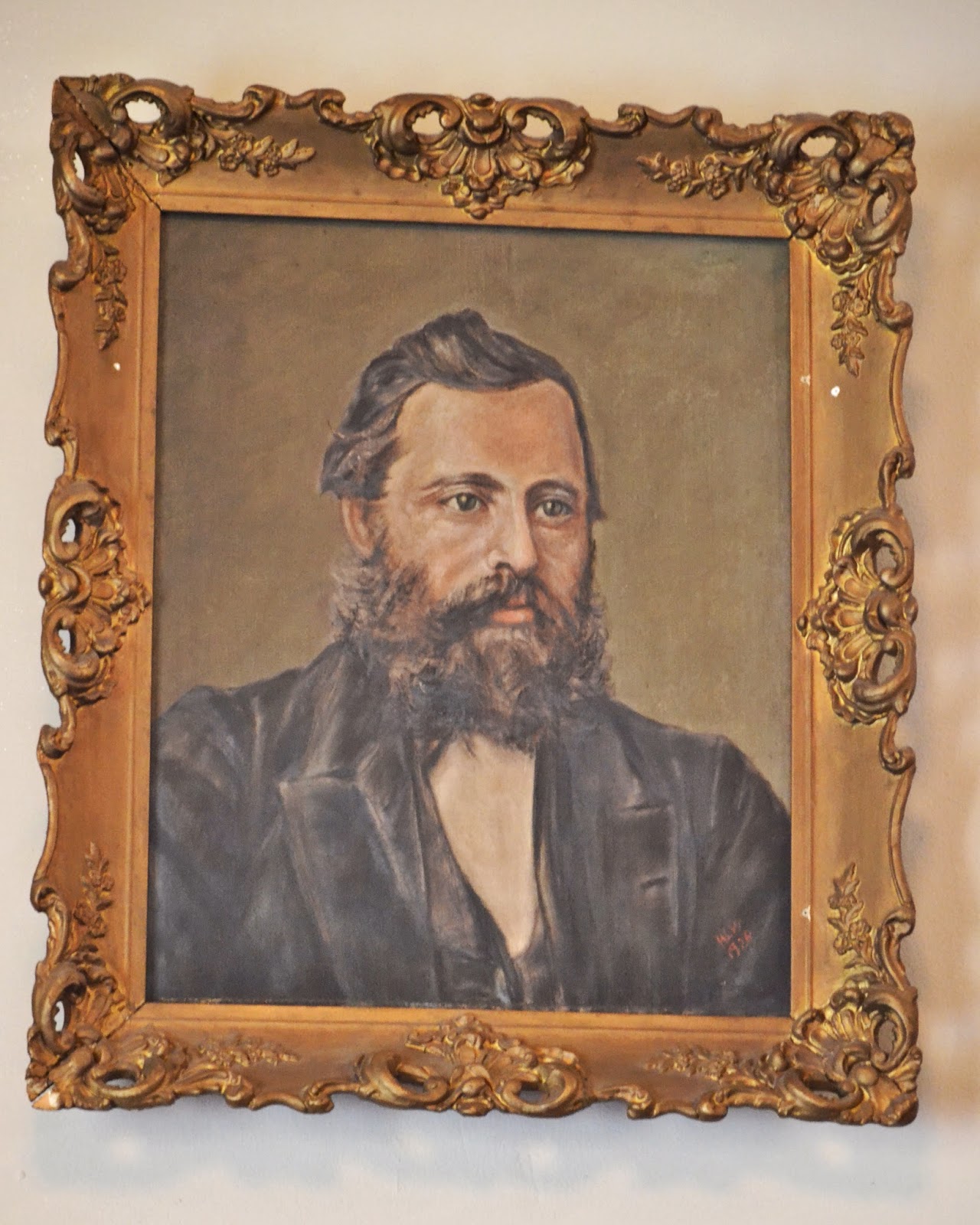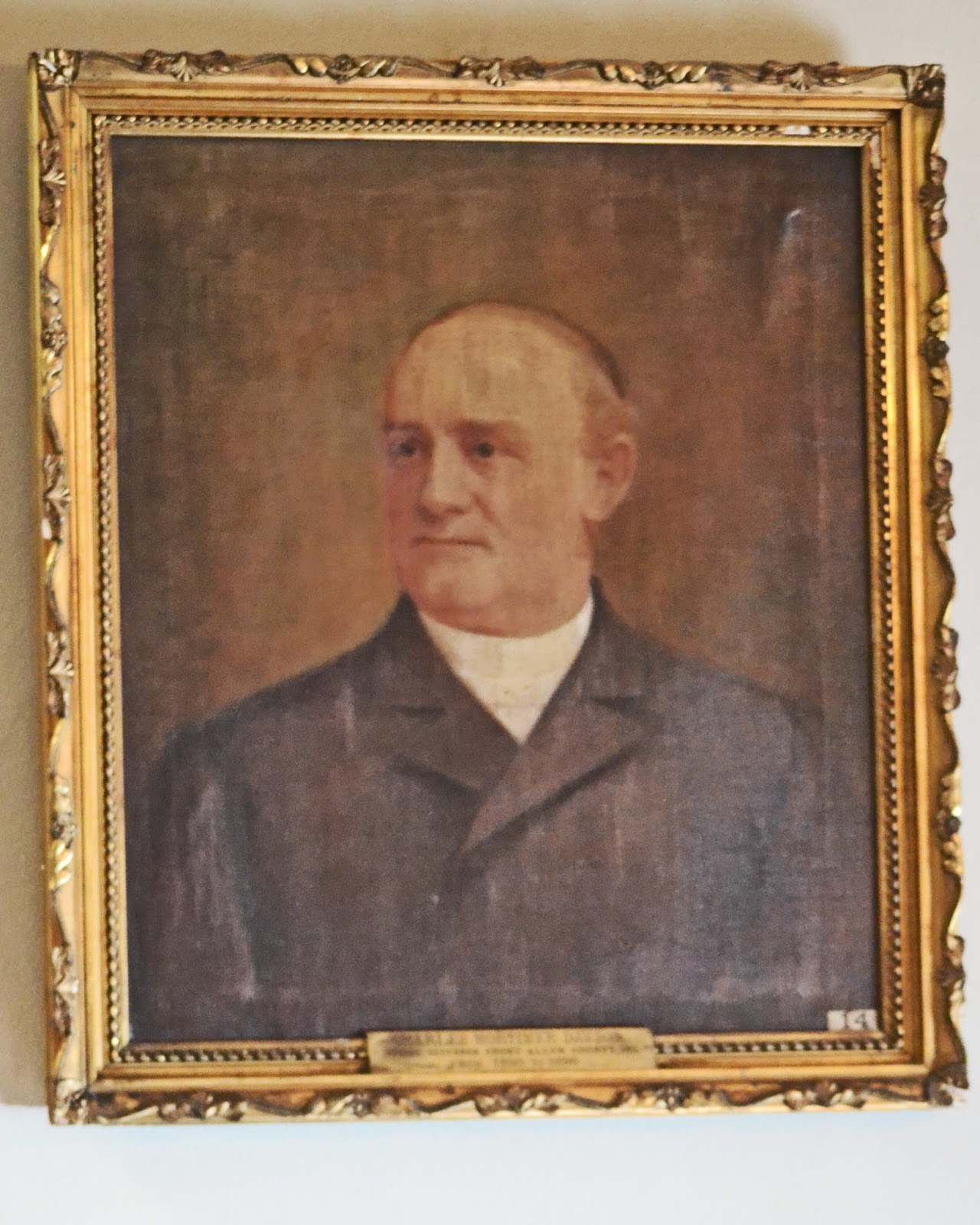by Carmen Doyle
The Grand Staircase at the History Center is hung with the
formal portraits of Fort Wayne citizens who could either afford to sit for a
painter and have their portraits done or were prominent enough that someone was
willing to make a portrait of them.
Although the faces probably aren’t familiar, some of the
names are. There are portraits of Sam Hanna, Samuel Foster, and Major-General
Henry Lawton. (For a very brief idea of why these men got to get places named
after them, check out our blog from December- http://historycenterfw.blogspot.com/2013/12/why-is-he-so-important.html)
Here are the persons who are featured in our stairwell.
Moses Jenkinson- Moses Vail Jenkinson was the son of Joseph
Jenkinson, a former Fort Wayne commander. Moses was an attorney and legislator.
He was elected as a state representative and to the Indiana General Assembly.
Margaret S. Jenkinson- Wife of Moses. Not much else is known
about her!
Stephen Bond Fleming- Fleming was a politician. He was in
the Indiana State Senate from 1901-1915. Fleming was a delegate to the
Democratic National Committee in 1908. He served as president of Holsum Bakery
from 1938-1956. Fleming died at age 91 and is buried in the Catholic Cemetery.
Dr. Park M. Leonard- Dr. Leonard served on the Board of
Health in 1854. His portrait was painted by his granddaughter Harriet Wright.
Samuel Foster- Sam was a “civic leader”. Basically, he was
involved in a lot of different community organizations. He was president of the
German-American National Bank, Lincoln National Life, and a member of the
Indiana Centennial Committee where he was in charge of speakers. He is most remembered
now for his park. Foster Park was the largest gift of park land to the city and
was donated by Sam and his brother. Foster made money by being a banker and a
shirtwaist manufacturer. (Shirtwaists were similar to blouses and you can see a
great example in our exhibition gallery Allen County Innovation.)
Jack Griffin- Jack was a student at Yale when he
unexpectedly died in a car crash. In his memory, his parents established a
scholarship.
Bert Griswold- Griswold was a historian, an author, and did
newspaper cartoons and caricatures of important Fort Wayne citizens. His book The Pictorial History of Fort Wayne,
Indiana is an excellent reference, used for information on many of the
people in this post. One of his other books, Some Fort Wayne Phizes, has his drawings of prominent Fort Wayne
citizens.
Charles Mortimer Dawson- Dawson was a well-known attorney
and judge. He was a judge for the superior court. He was appointed prosecuting
attorney of the 38th judicial district by the governor.
Ross McCulloch- his grandfather was Hugh McCulloch. Ross was
a member of many clothes and athletic activities. He lived in the
McCulloch-Weatherhogg house, next to the History Center, now home of the United
Way.
Major General Henry Lawton- Lawton was a great soldier. He
fought in the Civil War (at Chickamunga and Shiloh, among other battles). After
the Civil War he started to study law at Harvard, but when he got an
appointment in the regular army, he became a career soldier. Lawton fought in
the Indian Wars against Sioux and Apaches and was in the regiment that captured
Geronimo. He then fought in the Spanish-American War alongside Teddy Roosevelt.
After that, he fought in the Philippines, where he was killed. He is buried in
Arlington Cemetery. (Yep, he was that important!) Lawton has a park in Fort
Wayne named after him, and a statue. (Which is not in the park named for him!)
Saturday’s News
Sentinel described Teddy Roosevelt dedicating a statue of General Lawton in
Indy- and here’s a photo:
This is a political cartoon featuring Lawton:
Brentwood Tolan- Tolan was the architect of the current
courthouse, which is actually the 5th courthouse in Fort Wayne.
Samuel Hanna- Hanna was a judge. He was also a major
landowner, involved in the railroad as well as in creating the canal. His
family’s portrait is in the Fort Wayne Museum of Art. The History Center’s
Digital Collections has the portrait (with family members identified) as well
as some of the railroad concerns and shares from Hanna.
Yes, the portraits on the staircase are mostly of men. But these men made an impact on Fort Wayne history.
How are you going to make an impact on Fort Wayne history?












No comments:
Post a Comment